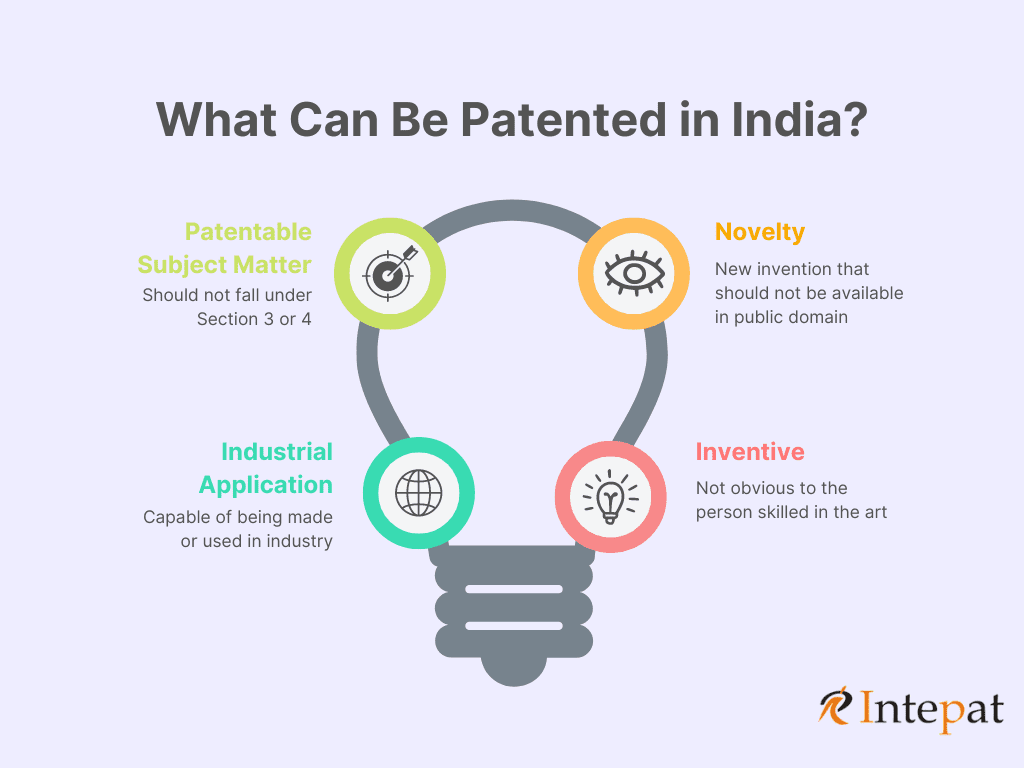What can be patentable in India?
Sections 3 and 4 of the Indian Patents Act 1970 specifically state the inventions that can not be patented. Our previous blog post has comprehensively explained the inventions not patentable in India. That brings us to the question; what can be patentable in India?
At the outset, it has to be mentioned that the answer to this is not set in stone, and there isn’t any definitive list of what can be patentable in India.
There are, however, specific criteria that are required to be met to make an invention patentable. The patentability of an invention is determined by its ability to meet the requirements.
Before delving into the criteria for patentability in India, it is essential to understand the “invention meaning” and “patented meaning.” This would definitely answer the question, “which of the following can be patentable in India.”
According to Section 2(j) of the Indian Patent Act, 1970, an invention means “a new product or process involving an inventive step and capable of industrial application” such innovation protected under the patent law refers to patented.
The following determine the patentability criteria and patentable requirements of an invention in India:
1. Patentable subject matter:
The foremost consideration is determining whether the invention relates to a patentable subject matter. Sections 3 and 4 of the Patents Act list out non-patentable subject matter. As long as the invention does not fall under any provision of Sections 3 or 4, it has patentable subject matter (subject to the satisfaction of the other criteria).
2. Novelty:
Novelty is essential in determining the patentability criterion of an invention.
Novelty or new invention is defined under Section 2(l) of the Patents Act as “any invention or technology which has not been anticipated by publication in any document or used in the country or elsewhere in the world before the date of filing of a patent application with complete specification, i.e., the subject matter has not fallen in the public domain or that it does not form part of state of the art.”
Simply put, the novelty requirement states that an invention should never have been published in the public domain and must be new with no identical or similar prior arts.
3. Inventive step or Non-Obviousness:
The inventive step is defined under Section 2(ja) of the Patents Act as “a feature of an invention that involves technical advance as compared to the existing knowledge or having economic significance or both and that makes the invention not obvious to a person skilled in the art.”
Accordingly, the invention must not be obvious to a person skilled in the same field as the invention relates to. It must be inventive and not obvious to someone skilled in the same field. You may also read the non-obviousness comparison between India, Europe, and the US.
4. Capable of Industrial Applications:
Under Section 2(ac) of the Patents Act, industrial applicability is defined as “the invention is capable of being made or used in an industry.”
Accordingly, the invention cannot exist in the abstract. It must be capable of being applied in any industry, which means that the invention must have practical utility to be patentable.
These are the statutory criterion for the patentability of an invention. Apart from this, another important criterion for getting a patent is the disclosure of an enabling patent. An enabling patent disclosure means a patent draft specification must disclose the invention sufficiently to enable a person skilled in the same field related to carrying out the invention without undue effort. If the patent specification does not reveal an enabling patent, then a patent will most definitely not be granted.




